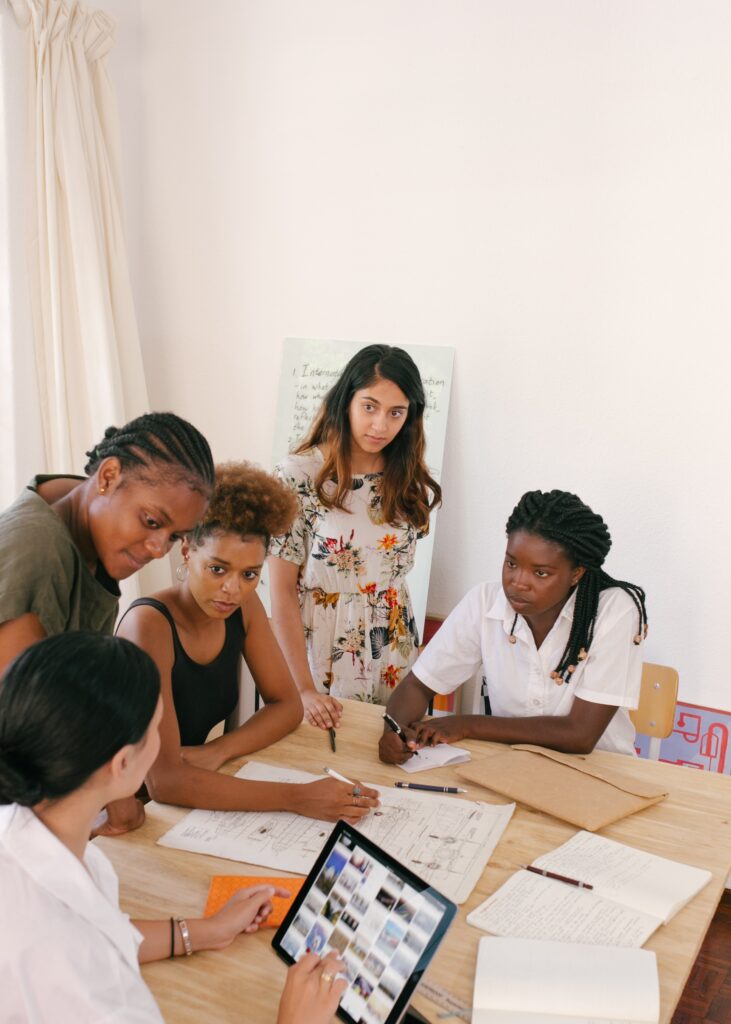Submitted by: Jerel P. Calzo, Hirokazu Yoshikawa, V. Paul Poteat, Talia Kieu, Amanda Pham
Highlights
Collective norms around race and immigration talk facilitated or impeded the extent to which these were discussed.
────
Advisors and student leaders can embrace a “brave space” rather than a “safe space” dynamic to encourage students to participate in intersectional conversations.
There has been an increase in media coverage and political conversations about white nationalism, deportation of immigrants, and the denial of rights to immigrants and sexual and gender diverse (e.g. LGBTQIA+) peoples. In the aftermath of the 2016 US Presidential election, educators across the nation noted a shift in their school climates.
“It is crucial to identify and support adolescent spaces that foster dialogue around intersectional oppression, particularly for LGBTQIA+ youth, youth of color, and immigrant-origin youth. GSAs– which center on support of LGBTQIA+ youth– are a possible space to discuss racism and nativism, but such discussions are difficult. To encourage further race and immigration talk in GSAs, interviewees recommended facilitated discussion and initial low-risk opportunities. Participants noted that advisors should facilitate race and immigration talk and that current societal event topics are useful tools to broach discussions on racism and nativism, as these may be considered more neutral than personal disclosures on these topics.”
Specifically, students of color, immigrant-origin youth (defined as including first generation [born outside the US] and second generation [born in the US to at least one immigrant parent]), and LGBTQIA+ youth reported elevated levels of discrimination from other students and school officials.
Given the harmful impacts of discrimination and hate speech on youth, it is important to identify spaces that support critical and productive dialogue around racism, nativism, and anti-LGBTQIA+ rhetoric. Some extracurricular student-led clubs, such as Gender & Sexuality Alliances (GSAs), can potentially provide spaces for youth to discuss sociopolitical issues, including those related to race, immigration, and intersectional oppression. Gender & Sexuality Alliances (GSAs) are school-based clubs that support youth of diverse sexual orientations and gender identities. GSAs can also foster and support discussions about intersectional identities including topics related to race and immigration.
Methods
We interviewed 38 diverse youth (ages 13-20 years old) from high schools across Massachusetts between 2016 and 2018 about how their GSAs discussed topics of race, racism, immigration, and nativism. We also asked participants to share recommendations for how to foster these types of discussions in GSA spaces.
HOW DID A COMMUNITY PSYCHOLOGY PERSPECTIVE INFORM YOUR WORK?
Many studies of LGBTQIA+ youth focus on individual-level factors and health disparities. GSAs, as an extracurricular space, are an important opportunity and support setting for LGBTQIA+ youth and their allies. They have not been examined in great depth with regard to how they support youth of diverse racial and ethnic or immigrant-origin identities. Because group discussion is a central feature of the GSA space, we focused on discussions of race and immigration (i.e., race and immigration talk) as a potential activity whereby GSAs can create opportunities for members to challenge deficit-oriented narratives concerning race and immigration; to process experiences of oppression and resistance; and to provide support to one another.
Results
- Discussing race, racism, immigration, and nativism is consistent with the support and advocacy functions of GSAs.
- These types of discussions (which we labeled “race and immigration talk”) are particularly relevant for youth of color and immigrant-origin youth in GSAs.
- Race and immigration talk depended on the representation and composition of the GSA (i.e., GSA demographics), if the topics were deemed personally relevant to members, whether there were current events related to race and immigration to discuss in the GSA, and whether students perceived issues of race and immigration as part of the agenda of the GSA.
- Some students indicated motivation to discuss racism and nativism yet refrained from doing so due to discomfort or fear of misspeaking.
- Overall, youth primarily viewed the GSA as a space for LGBTQIA+-oriented discussions and support, yet expressed potential for fostering productive race and immigration talk in GSAs given the ongoing US sociopolitical climate.
- Advisors play an important role in introducing and sustaining race and immigration talk in GSAs.
- Discussions facilitated by advisors focusing on inter-connected oppression (e.g., intersections of racism and heterosexism) and that encourage youth to participate in discussion rather than avoid race and immigration talk, may help students develop new intersectional competencies.
What Does This Mean For?
Research and Evaluation: Our interviews centered on youth experiences with race and immigration talk, and we did not interview advisors in the GSA space. Nevertheless, youth mentioned that advisors can play an important role in broaching the topic and facilitating race and immigration talk. Future research should examine the role of advisors in race and immigration talk.
Practice: Some students reported fear of misspeaking and safe space ground rules as being potential impediments to engaging in race and immigration talk. At the same time, nearly all participants indicated that race and immigration talk are important. Adopting “brave spaces”-oriented ground rules that encourage participation (so students can work through fear of misspeaking, and gain greater competence), having advisors facilitate discussions, and using current event topics for discussion may help spur greater race and immigration talk.
Social Action: It is important to build students’ understanding of and confidence in addressing issues around intersectional identity, oppression, power and privilege. GSAs could explore commonalities across groups that are typically viewed as fundamentally different (i.e., LGBTQIA+ communities, people of color, and immigrant communities), both as means of understanding intersectional oppression, and to develop coalitions to dismantle oppression.
Original Citation: Calzo JP, Yoshikawa H, Poteat VP, Kieu T, Pham A. The substance and circumstances of race and immigration talk in high school gender and sexuality alliances. American Journal of Community Psychology.



